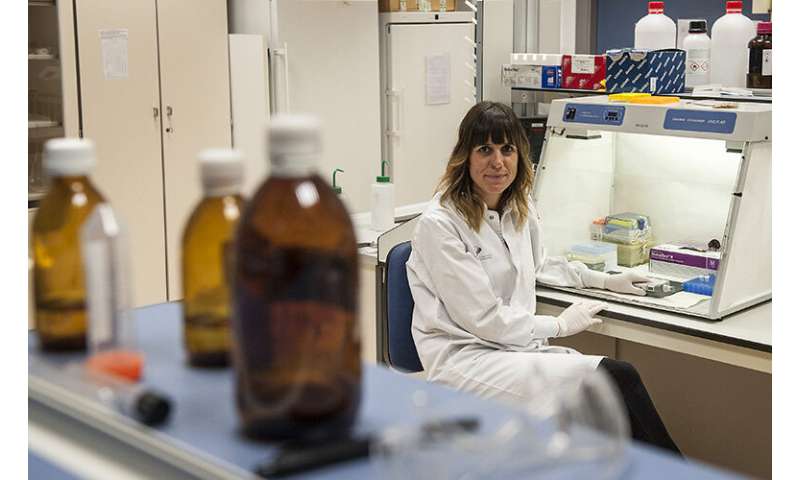
Resveratrol and quercetin are two functional ingredients to which a fat-reducing effect has been attributed in experiments conducted in vivo and in vitro. Yet their rapid metabolism means that only a tiny fraction of these compounds reach organs and tissue. Now, a new study suggests that their metabolism should not be regarded as a limitation in the use of resveratrol in pre-adipocytes nor in the use of quercetin in mature adipocytes.
Obesity is defined as excess accumulation of body fat, which can result in the development of a whole range of comorbidities. According to the World Health Organisation (WHO), in 2016, 39 percent of adults were overweight and 13 percent obese. What is more, 41 million children under five are overweight or obese, and 340 million in the case of children and teenagers between the ages of five and 19.
Phenolic compounds are antioxidants that occur naturally in plants, which produce them as a defense mechanism in response to stress. Thanks to previous studies, a diet rich in phenolic compounds has been found to maintain an optimum state of health and reduce the occurrence of certain diseases, including cardiovascular diseases, cancer and diabetes. When phenolic compounds have more than one phenolic ring in their structure, these compounds are then known as polyphenols, a more widely known term. Resveratrol and quercetin are currently two of the most studied polyphenols.
The beneficial effects of resveratrol were first described in 1982, when, thanks to an observational study, an inverse relationship was established between moderate wine consumption and the prevalence of cardiovascular disease. This observation later became known as the “French Paradox.” This polyphenol is found mostly in grapes and the beverages made from them (grape juice and wine), berries and peanuts, among other things, and various biological functions have been attributed to it, including antioxidant, anti-inflammatory, immunomodulating, anti-diabetic and anti-carcinogenic functions. It has also been found to have anti-obesity functions owing to the reduction in body fat through such mechanisms as food intake modulation, modification of nutrient absorption, regulation of the cell cycle of adipocytes, reduction in adipose tissue inflammation, regulation of mitochondrial function, induction of thermogenesis, and modulation of intestinal microbiota.
Activity following metabolism
The Ph.D. thesis by Itziar Eseberri-Barace takes this research a step further, demonstrating that certain metabolites of resveratrol and quercetin molecules, the products that remain following their digestion, remain biologically active and partly contribute to the anti-obesity effect of the compounds.
“The results obtained show that all the metabolites from resveratrol contribute to the same degree as the polyphenol toward inhibiting adipogenesis. Although they are active in mature adipocytes, resveratrol is much more effective. In the case of quercetin, this effect can only be attributed to the sulphated metabolite (quercetin-3-0-sulphate) in mature adipocytes, since none of the quercetin metabolites turned out to be as effective as or more effective than the polyphenol on its own in inhibiting adipogenesis,” explained Eseberri-Barace. “It can therefore be concluded that the metabolism of these two compounds can signify a limitation only in the case of mature adipocytes treated with resveratrol and pre-adipocytes in differentiation treated with quercetin.”
Quercetin is found in larger amounts in apples, onions, cherries, berries, broccoli and tea. Just as in the case of resveratrol, many biological functions have been attributed to it, such as anti-inflammatory, antidiabetic, antihyperternsive, antihypercholesterolemic, antiaterosclerotic and antiobesity functions.
Note that apart from their low bioavailability, phenolic compounds occur in small quantities in foodstuffs, because after they have been digested, they undergo extensive metabolization, with the result that the amount that reaches organs and tissue is relatively low. “The amounts of resveratrol and quercetin used in most of the in vitro studies conducted to date for the purpose of studying their effects as anti-obesity molecules are a long way from those that actually reach the tissue, so the use of doses closer to reality has been one of the novel aspects of this work,” said Itziar Eseberri. “What is more, very few studies have been conducted to check whether the metabolites derived from the metabolism of the two polyphenols have any biological activity on a par with the parent compound.”
So, the thesis sought to analyse whether the main metabolites of the two compounds in 3T3-L1 adipocytes could be responsible for and contribute toward the fat reduction effect attributed to resveratrol and quercetin, and also to check and compare the action mechanisms responsible for the antiobesity effect of each of the molecules in adipocytes in culture. After conducting experiments, which gave rise to five published scientific papers, the work has shown that certain metabolites of both molecules are biologically active and contribute partly toward the antiobesity effect.
Source: Read Full Article
